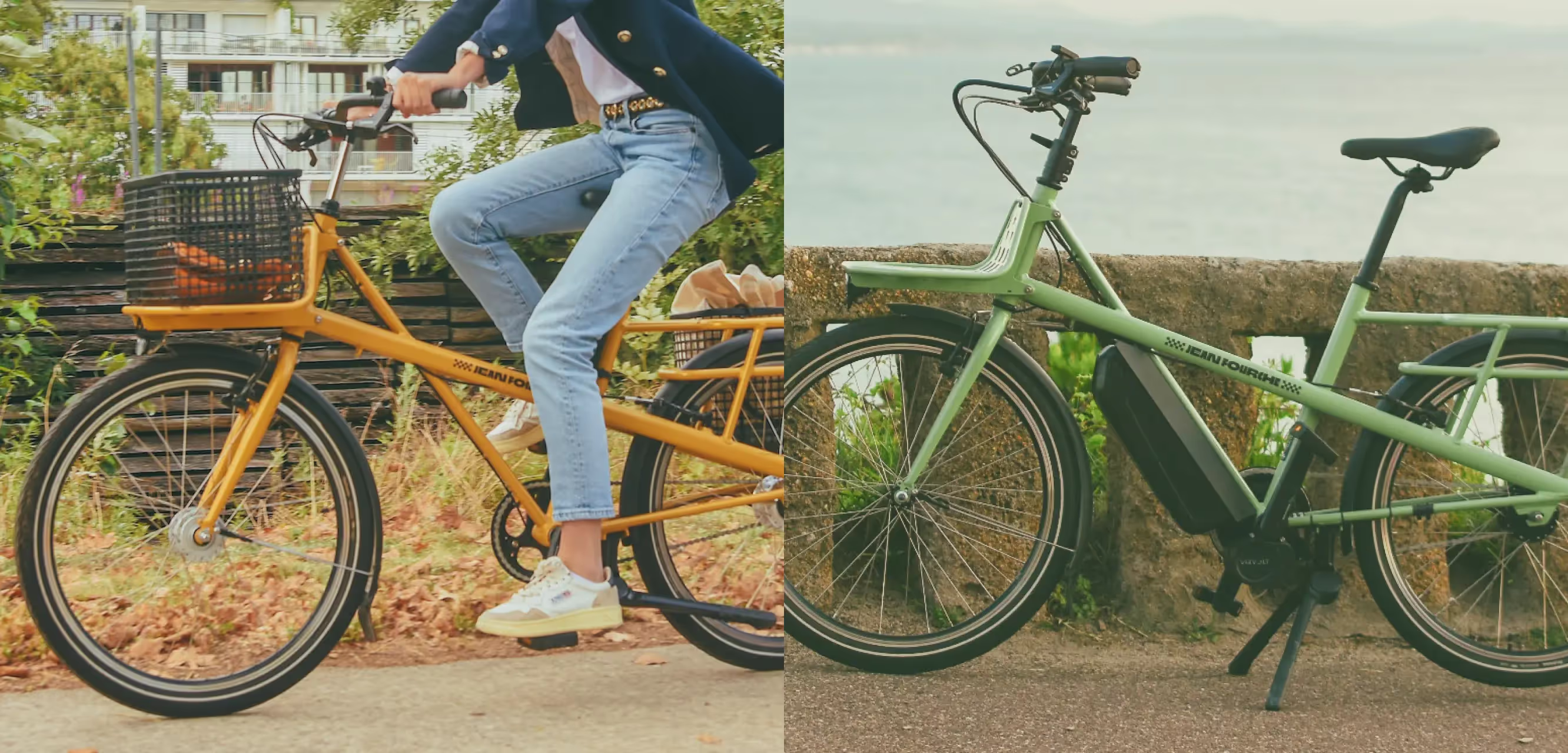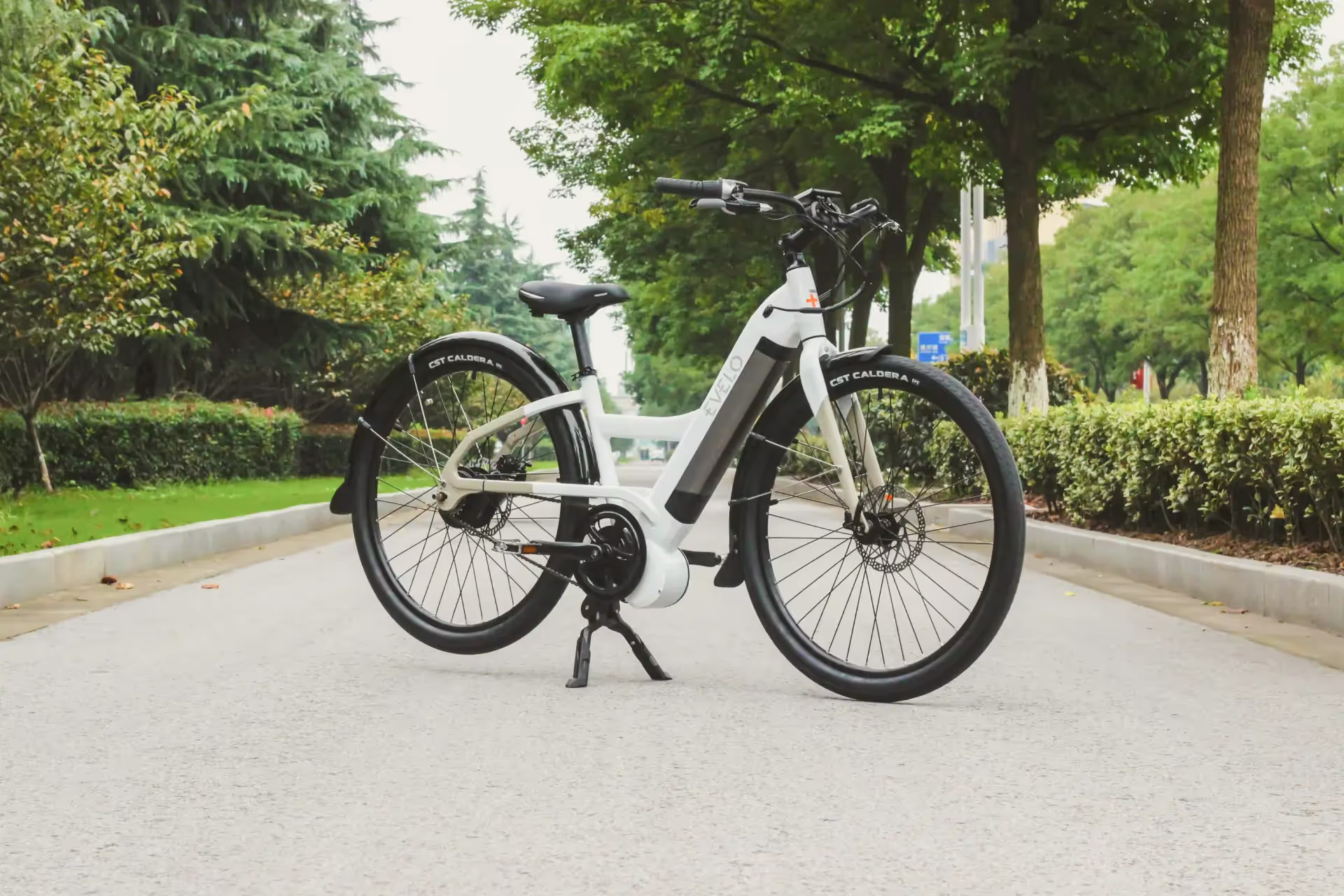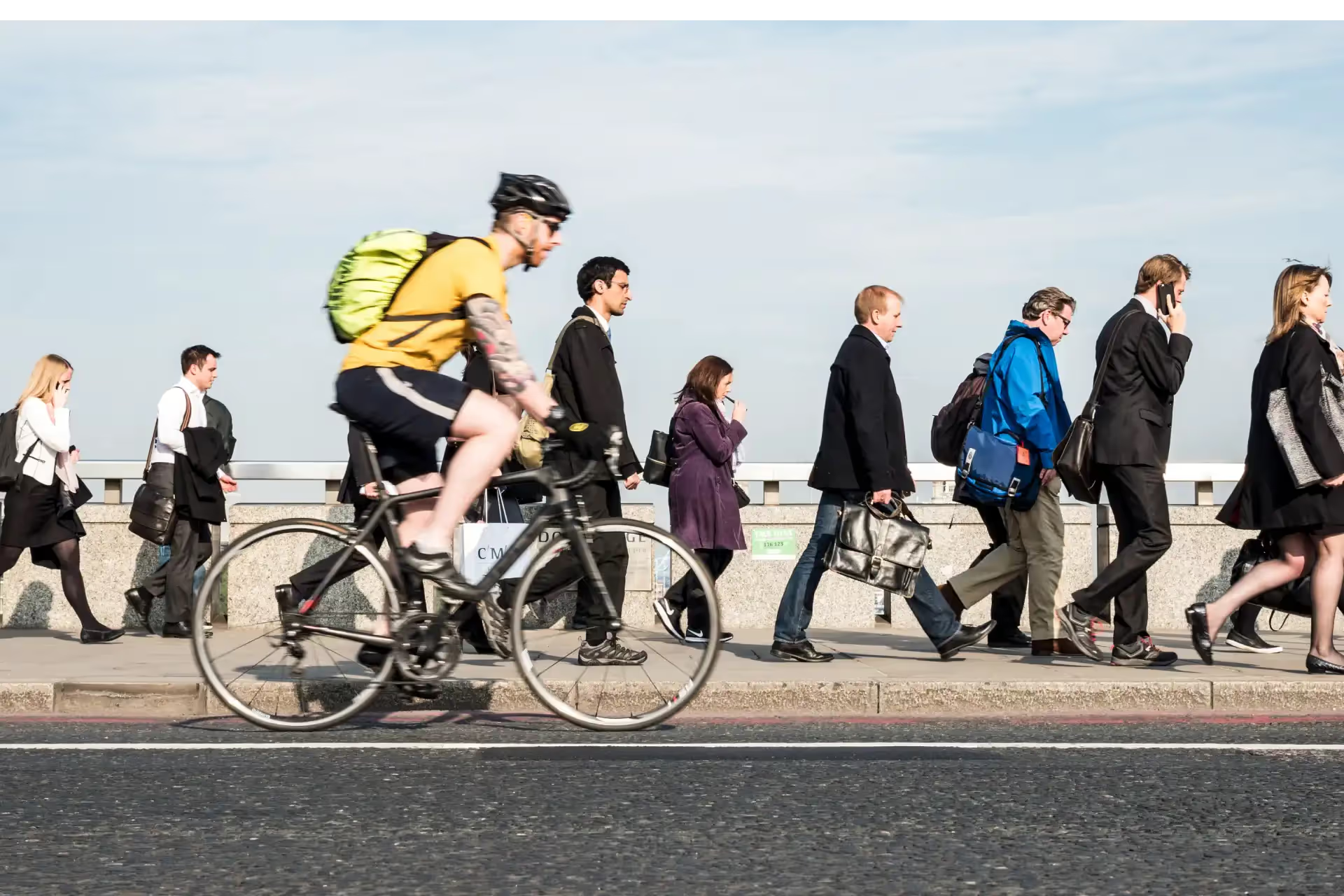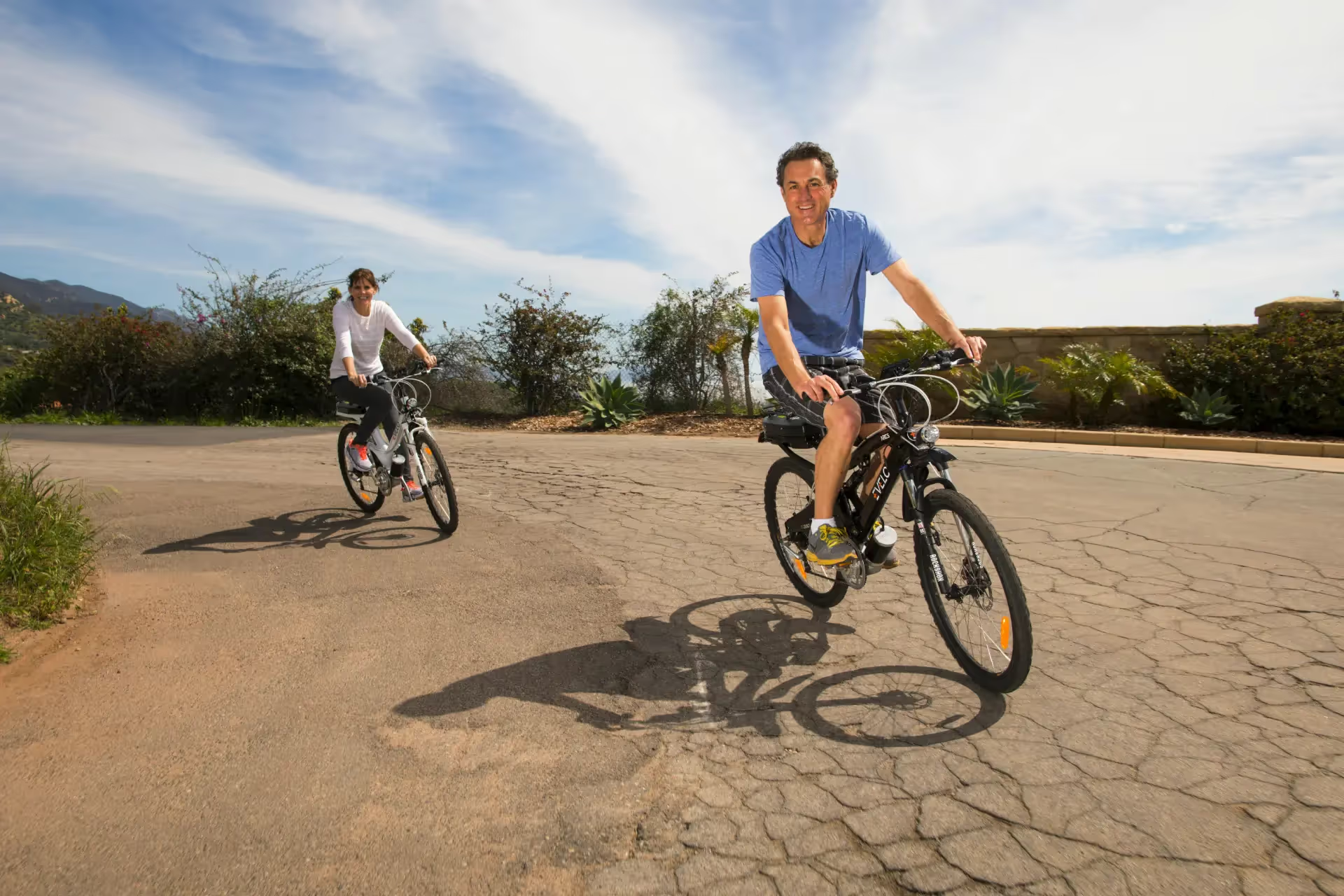At Sundays, we are big fans of commuting by bike. Completing your trips on a bicycle provides many benefits for the environment, your physical and mental health, and your wallet. But when deciding on the best bike for commuting, should you choose an electric bike or a regular bike?

I’ll break down how best to get around the city, including the advantages of e-bikes for commuters and why properly equipped standard bikes still make for amazing daily rides.
If you’ve made the move to commute by bicycle, you’re already a champion in our book. Bike commuting is a healthy and convenient habit, so you can’t go wrong no matter what kind of bike you choose to use. Whether you’re pedalling an e-bike or a regular bike, you’re helping the planet stay a bit greener, getting daily exercise, and boosting your overall health. But what bike is the best choice for getting from point A to point B?

Electric bikes can transform your commute by flattening hills and shortening the trip time, lowering the stress and sweat levels that can come along with a daily commute. However, e-bikes cost significantly more than standard bicycles without a motor and battery. The initial higher cost of buying an e-bike is what puts most people off commuting by a pedal-assist bike, but the added benefits can be well worth it for many riders.

Electric bikes will make the biggest difference if your commute is especially long or has lots of sweat-inducing hills. The extra boost from the e-bike’s motor combines with your natural pedal power to flatten steep climbs so you can stay more comfortable throughout the entire trip. Early mornings are tough enough and electric bikes can prevent you from overexerting yourself before arriving at your destination.
E-bikes can cruise along at speeds of up to 15.5 mph to significantly shorten lengthy commutes, meaning you can enjoy that second cup of coffee before heading out the door. Commutes that would otherwise be too long for standard bikes are possible with e-bikes. These longer journeys are typically completed via public transport or car trips, but e-bikes are a cleaner and traffic-free way to get to work or school.
“The take-homes for me [about ebikes] are: firstly, you don't really need to worry about the batteries. It becomes so easy when you get used to it and even when you're new to it. The other thing to bear in mind is that ebikes can be real workhorses. You can load them up with as much weight as you want and it's still zippy and fun to ride. And even if you're an experienced cyclist, you still get a benefit to your fitness so while ebikes are easy to ride, you still get exercise on them.”
—Simon Richardson, GCN presenter
Standard bicycles can be a great choice for relatively flat terrain and riders who want more of a workout during their commute. Beyond being a more budget-friendly option, regular bikes have long proven their commuting prowess when there aren’t huge hills between you and your final destination. For example, when visiting London recently, I easily commuted everywhere across the pleasantly flat city on a vintage 10-speed road bike. Sure, I could have gotten places faster on an e-bike but I was able to freely explore the big city without having to worry about leaving an expensive e-bike out in the open.
E-bikes reduce the effort needed to pedal during your commute but some riders (like me) love getting in a bit of a workout twice a day on their bike. Active cyclists can even treat their commutes as an opportunity for some training if their commute is long or hilly enough— hey, who needs a gym membership anyway? It’s a huge plus if your place of work has a place to shower post-ride so you can wash away sweat and change out of your cycling clothes.

It’s no secret that riding an e-bike can significantly enhance your commute. Take a look at these specific benefits of commuting with an electric bike to see if pedal assist is the right choice for your daily ride:

There are few important things to keep in mind when commuting by electric bike. E-bikes are faster, heavier, and more powerful than standard bicycles which presents a higher risk of bike damage or personal injury. Getting used to an e-bike’s handling and controls can take some time, but you’ll get the hang of it to cruise along safely.
Motorists and pedestrians may not expect the faster pace of electric bikes, especially in traffic or congested areas such as crowded bike paths. Moderate your speed appropriately to ensure you are riding safely and respecting those around you— an e-bike whizzing by unannounced can catch people off-guard.
Lastly, make sure that you’ve got a secure place to keep your electric bike at the end of your commute. Many workplaces have some type of secure bike storage but other instances may require that you lock your bike outside on the street. The higher value of e-bikes can make them a target for thieves, but there are several ways to enhance the security of your bike. Learn more about how to keep your bike as safe as possible with Sundays’ best tips on preventing bike theft.
Going old-school and using a standard bicycle as your dedicated commuter is still a solid choice— and my preferred method. I enjoy the simplicity of commuting on my analog bike where there’s no motor or complex electronics to think about, starting my day off with some good ol’ pedalling. Shelling out serious cash for a quality electric bike isn’t a possibility for everyone and traditional bikes have served commuters well for ages. To me, commuting is all about making your bike your own and adapting it to your daily needs rather than having the fanciest model available.

Riding any type of bike will still help you avoid getting stuck in traffic and losing time trying to find parking in the city— missing a bus or train won’t ever be a problem either. Standard bikes are an even more cost-effective way to commute compared to e-bikes and are drastically cheaper than using public transport or a car. Commuters love to nerd out on handy accessories for their bike like panniers, fenders, bags and seek out the best cycling apparel. Saving cash instead of spending it on an e-bike means you can splurge on other items to build your dream commuter bike!
No matter which bike you use to complete your commute, you’re already on track to saving money in the long run. When calculated per commute, riding a bike is significantly cheaper than other affordable ways of getting to work like taking the bus or riding the train which can cost several Dollars (or much more) for a round trip.
Commuters can save even more by replacing car rides with riding a bike. People can save hundreds of Dollars per month by cutting down their spending on petrol and expensive city parking! Unless you are able to fully replace your car with a regular bike or e-bike to enjoy car-free living, you’ll still be on the hook for car insurance and maintenance costs but your car will require less upkeep in general.
All those avoided costs are just the direct savings of commuting by bike and there are many more indirect financial benefits too. The daily exercise of bike commuting means you’re getting a free workout and may not need that costly gym membership. Many cargo bikes have room for passengers to transport your kids to school or their activities, saving on transportation costs for the whole family. Having a commuter bike can contribute to better health outcomes overall and can take you all across the city, not just to work and back.
Riding an e-bike can help shorten long commutes and take the sting out of big hills along the way, ideal for cyclists looking to expend less effort. E-bikes also make it easier to carry cargo for errands on the way home. Regular bikes still make for great commuters, especially for riders who enjoy daily exercise and don’t want to spend as much on an electric bike.
There are electric bikes designed specifically for commuting with useful features such as a hybrid frame, rear rack, fenders, and multi-surface tires. But the best e-bike for commuting will depend on your own riding preferences. Riders wanting a bit more efficiency can choose electric road bikes and, if you frequently run errands around the city, you can opt for a cargo e-bike. Important components for any commuter e-bike include disc brakes, a quality motor and battery, and a comfortable frame.
Purchasing an e-bike can be a smart investment for many commuters, but the exact payoff depends on your budget and other commuting alternatives. For example, an electric bike has a much higher initial cost compared to a regular bike or daily public transport passes. However, it costs mere cents to fully charge an e-bike so over time the cost per commute is much lower than riding the bus, train, or driving a car.
Keeping your commuter bike safe while you’re at work is a top priority and some workplaces provide a secure storage space or corral for their employees’ bikes. If you don’t have that perk, make sure to secure your bike and all quick release wheels to an immovable object with an approved lock in a well-lit and highly trafficked area to discourage theft. Many cities have designated bike racks on the street which are great places to park your bike during the day.